CBSE Class 10 Science Notes of Chapter 16 Sustainable Management of Natural Resources, Video Explanation, and Question Answers
Sustainable Management of Natural Resources Class 10 Notes – CBSE Class 10 Science Chapter 16 Management of Natural Resources Notes.
Topics Covered in this Chapter are pollution, wildlife conservation, ganga action plan, water for all, why do we need to manage our resources, dams, forests and wildlife, water harvesting, stakeholders, watershed management, sustainable development, coal and petroleum, chipko andolan and NCERT Solutions for Class 10 Science Chapter 16 Sustainable management of natural resources.
Given here a Complete explanation along with all the important questions and NCERT solutions to book questions have also been provided for the ease of students of the chapter ‘Sustainable Management of Natural Resources’ .
Class 10 Science
Chapter 16 – Sustainable Management of Natural Resources
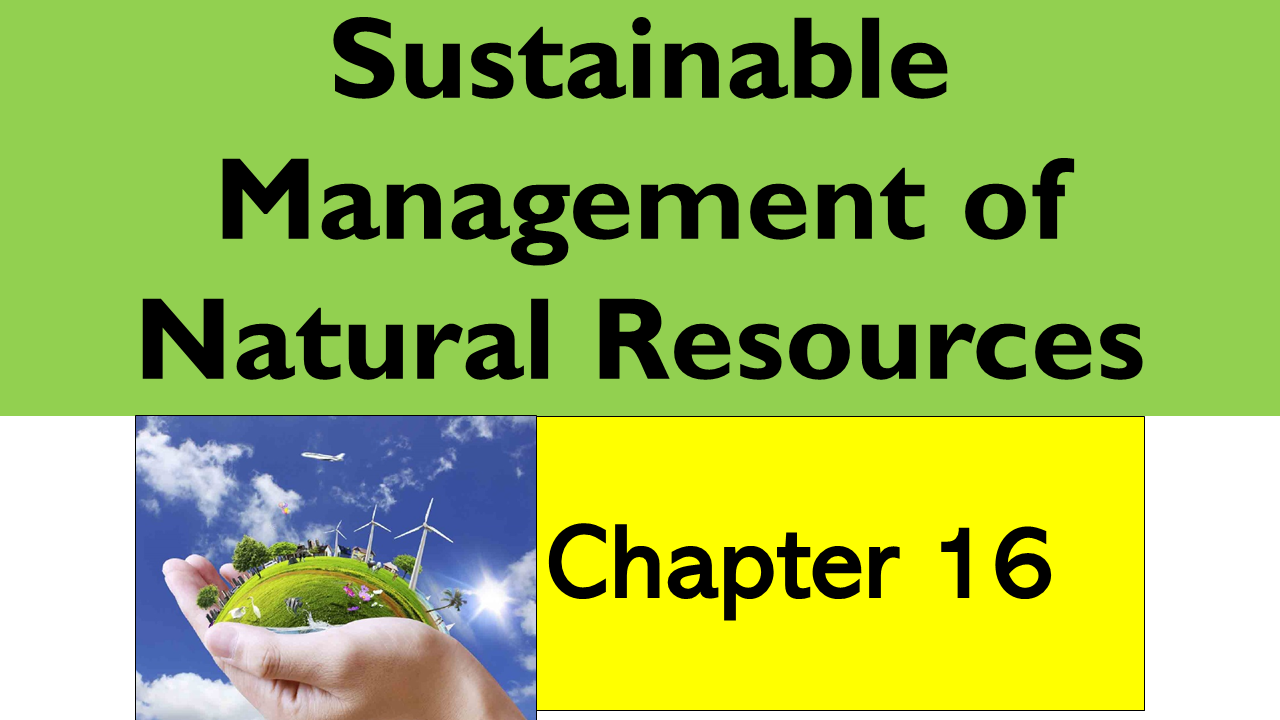
Topics covered in the lesson are
- See Video Explanation
- Pollution
- Wildlife Conservation
- Ganga Action Plan
- Water For All
- Why do we need to manage our resources
- Dams
- Forests and wildlife
- Water harvesting
- Stakeholders
- Watershed management
- Sustainable development
- Coal and petroleum
- Chipko Andolan
- NCERT Book Solutions
- Wildlife
Sustainable Management of Natural Resources Introduction
Management of Natural Resources –Resources include the total natural environment as all parts of the Earth are of some use to man. They are actually stocks of nature such as water, soil, minerals, coal, forests, etc. but due to increasing population and technological development, our natural resources are getting polluted and depleted.
Management of Natural Resources Class 10 Video Explanation
Pollution
Pollution is an undesirable change in physical chemical and biological characteristics of soil, water and air. This is harmful for all humans as well as other organisms on the Earth.
So there is an immediate need to take proper care and manage the natural resources to sustain them and conserve our environment for sustainable development.
There are international laws, organizations, different acts working towards the protection of our environment.
The awareness about the problems has lead to the conservation of the environment and natural resources.
For example – The Ganga Action Plan.
Top
Related –
| Essay on Pollution in English | Essay on Pollution in Hindi |
Ganga Action Plan
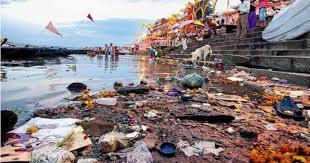
Ganga Action Plan is a massive multi – crore project implemented in 1985 which has undertaken to make the river Ganga pollution free.
It was noticed that due to continuous dumping of waste into river Ganga, the number of bacteria coliform increased to an alarming level. This bacteria is otherwise found in human intestine. This has lead to pollution of the river. As people use the water for bathing, washing clothes and many other activities that affects the ph level of water and makes it contaminated.
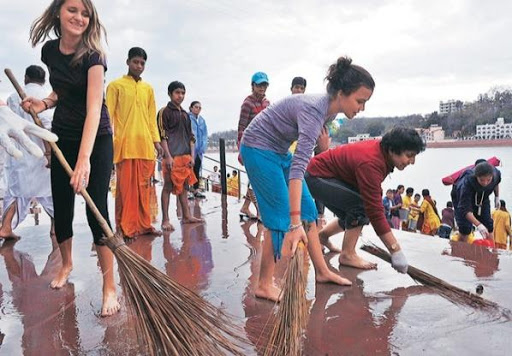
We can reduce the pressure on the environment by following 3R’s- Reduce, Recycle and Reuse.
Reduce: it means to use less natural resources, like :
- Switch off the electrical appliances when not needed
- Save fuel by walking etc
- Save food by not wasting it
Recycle: it means processing of waste to form new products. Practicing recycling saves resources, saves cost, also reduces the piling of waste materials.
Reuse : it means using an article again and again, like –
- reuse of used envelopes.
- The containers of jams and pickles are reused by storing other things.
- Use cloth bags instead of using polyethene, etc.
Why do we need to manage our Resources
We are in immediate need to manage our resources because everything that we consume is obtained from resources present on the Earth. They have to be carefully handled as natural resources are limited.
Management also ensures the availability of these resources always- today for us and tomorrow for future generations.
Top
Related – Tips to score 95% in Class 10 Science Paper
Forests and wildlife

In forests, we do see biodiversity (i.e. a wide variety of species of plants, animals and microorganisms are seen in a natural habitat).
These forests are our natural resources as well as a habitat for wildlife and need to be conserved.
Stakeholders
They are the persons and the parties having a binding interest in an asset.
The stakeholders are :
- Locals: who live around the forests and depend on forest products.
- The forest department: a government body which looks after the forest.
- industrialists: they take raw materials for running their industries.
- Wildlife and natural enthusiasts: those who need to conserve forest.
Top
Class 10 Science Chapters
Sustainable Development
It is controlling the use of resources in such a way that there is an equitable availability and continuous flow of products and services for the present and future generations without any impact on the environment.

Chipko Andolan
It was initiated in Tehri village of Garhwal. The people of that area realized the importance of forests and decided not to give timber products to people from other areas. They stood and hugged the trees and protested against cutting them.
Soon the Andolan spread in nearby areas and they also started to protest against cutting of trees.
Wildlife

Wildlife refers to living beings comprising of animals, plants and microorganisms found in natural habitats which are neither cultivated nor domesticated.
It is threatened due to a high degree of exploitation and human interference like-
- Habitat destruction
- Over exploitation
- Hunting
There is a large number of plants and animals that are facing exploitation and a risk of extinction. These species are called endangered species.
Wildlife conservation
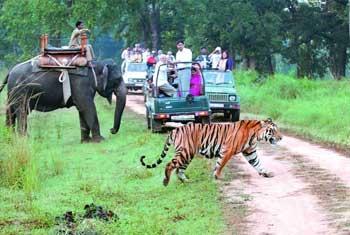
Conservation can be done by following methods-
- Maintenance of wildlife in protected areas: it is done by maintaining the following-
- National parks- a protected area where cultivation, grazing, hunting, etc. are not allowed. For example- Jim Corbett National Park.
- Sanctuaries- They are the protected areas where hunting is not allowed but all other activities are allowed.
- Biosphere reserve- A protected area meant for conservation of wildlife, traditional lifestyle of tribals and their domesticated animals.
- Protection of their natural habitat.
- Protection through legislation- There are a number of wildlife acts like :
- IBWL ( indian board of wildlife), 1952.
- Wildlife Protection Act, 1972.
- MAB (Man And Biosphere Programme), 1971.
- CITES (Convention Of International Trade In Endangered Species),1976.
Water For All
Water is very important for us. It is not only required for drinking but also for bathing, washing, irrigation, industry, construction work and disposal of sewage. The consumption of water has increased. For example, a villager requires just 25 litre of water in a day but an urban dweller requires at least 350-700litre of water a day.
The reason due to which we fail to sustain underwater availability are as follows-
- Loss of vegetation cover.
- Diversion for high water demanding crops.
- Pollution from industrial effluents and urban waste.
- Irrigation methods like dams, tanks and canals.
Dams
Dams are large water bodies that are built by government agencies across the rivers to regulate the flow of water and generate electricity.
The advantages of dams are as follows-
- They ensure adequate amount of water for irrigation through a canal.
- Water in dams is used for generating electricity.
- They ensure uninterrupted water supply.
Problems caused by the construction of large dams are as follows-
- Due to construction of high rise dams, a vast area of land gets submerged under water resulting in the displacement of a large number of people.
- They lead to deforestation and loss of biodiversity.
- They need huge expenditure.
Top
Class 10 Science Chapters, Explanation, Notes
| Life Processes | Acids, Bases, and Salts | Carbon and it’s compound |
| Chemical Reaction and Equations | Metals and Non-Metals | Periodic Classification of Elements |
Water harvesting
It is capturing, collection and storage of rainwater and surface runoff for filling either small bodies or recharging ground water.
Benefits of water harvesting are as follows-
- It ensures water availability.
- It reduces the chances of flooding during the rainy season.
- The groundwater is regularly recharged.
Khadin system: it is a traditional rainwater harvesting system for agriculture in Rajasthan. It consists of a very long earthen embankment down the slope of the catchment areas which helps in retaining run off water. A shallow well is often dug behind the embankment to store extra overflowing water. The stored water slowly percolates down into the ground. The area is then used for growing crops and for vegetation.
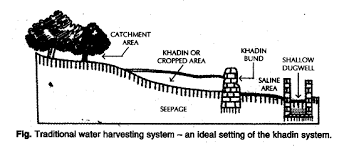
Watershed management
It acts as a raised area which is a source of runoff water to low lying areas and watershed management emphasis is the scientific method of soil and water conservation in order to increase biomass production. It actually aims at developing primary resources of land and water to produce secondary resources of plants and animals for use in a manner that will not cause ecological imbalance.
Advantage of watershed management are as follows-
- Growing more trees in watershed areas, increasing the retention of more rain water and protection of soil from erosion.
- It enhances productivity that increases the income of watershed community.
- it reduces draughts and floods.
- It increases the life of downstream dams and reservoirs because of less silting.
There are a lot of advantages of groundwater recharging like-
- it does not evaporate.
- It spreads out to recharge wells.
- It provides moisture for vegetation over a wide area.
- It doesn’t get contaminated by human or animal waste.
Coal and petroleum
They both form fossil fuels and as we know that they require much time to get replenished, so their judicious use is recommended in order to save them for future generations.
Top
Important Videos Links
NCERT Solutions Class 10 Sustainable Management of Natural Resources
Q1-What changes would you suggest in your home in order to be environment-friendly?
Ans-We can become eco- friendly by making the following changes in our habits-
Switching off the unnecessary electronic equipment.
- Using the principle of 3R’s i.e. Reduce, Reuse and Recycle.
- Using unleaded petrol in vehicles.
- Using local transport like buses or trains.
Q2-Can you suggest some changes in your school which would make it environment-friendly?
Ans-School management can do the following to make school environment- friendly:
- Growing more and more trees in and around the school.
- Employing rain water harvesting system in school.
- Maintaining a small park in the school premises
- Encouraging students to become environment friendly.
Q3- We saw in this chapter that there are four main stakeholders when it comes to forests and wildlife. Which among these should have the authority to decide the management of forest produce? Why do you think so?
Ans- According to us, the people who live in and around the forests should be given the authority to decide the management of forest produce because these people are fully dependent on the forests for their survival. Hence, will try to maintain forests and its resources for their future use also.
Q4-How can you as an individual contribute or make a difference to the management of (a) forests and wildlife, (b) water resources and (c) coal and petroleum?
Ans- One can contribute in maintaining various types of resources in the following manner.
Forests and wildlife:
- By planting more and more trees as this will solve the issue of deforestation
- By banning the hunting of animals
- By organizing campaigns to aware people about the importance of forests and wildlife
Water Resources
- By not wasting water
- Reuse of waste water in cleaning or watering the plants
- By practicing rainwater harvesting
- Using drip irrigation method
Coal and Petroleum
- Using clean sources of energy such as LPG for cooking
- Use of public transport instead of personal vehicles in order to save energy resources
Q5-What can you as an individual do to reduce your consumption of the various natural resources?
Ans- As an individual one can adopt the following ways to reduce our consumption of various natural resources:
- Use of solar cooker for cooking
- Use of public transport instead of private vehicle
- Conserving water during rains
- Reuse of waste water for cleaning and watering plants
- Switching of unnecessary electronic equipments
- Use of electronic equipment that consume less energy. such as LED bulbs
Q6- On the basis of the issues raised in this chapter, what changes would you incorporate in your lifestyle in a move towards a sustainable use of our resources?
Ans- I would like to incorporate the following changes in my lifestyle to use the resources in a sustainable manner:
- Use of solar cooker for cooking
- Use of public transport instead of private vehicle
- Conserving water during rains
- Reuse of waste water for cleaning and watering plants
- Switching of unnecessary electronic equipments
- Use of electronic equipment that consume less energy. such as LED bulbs
Top
Important Questions Videos Links